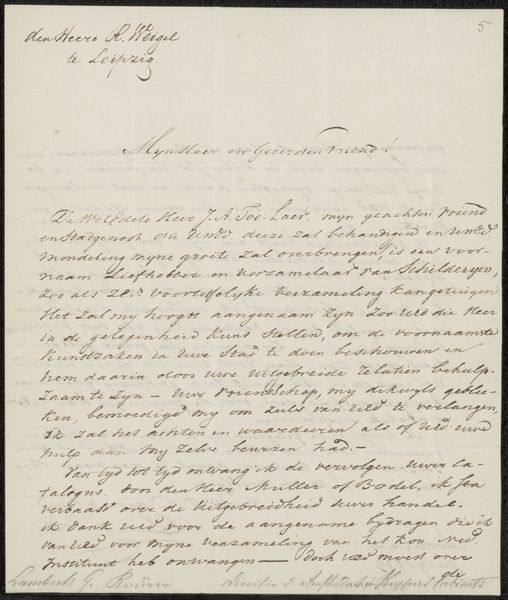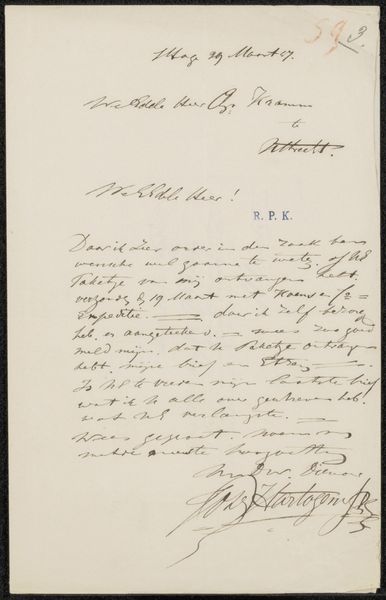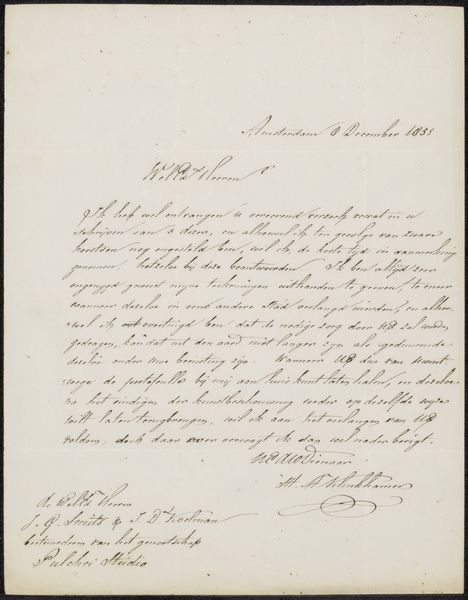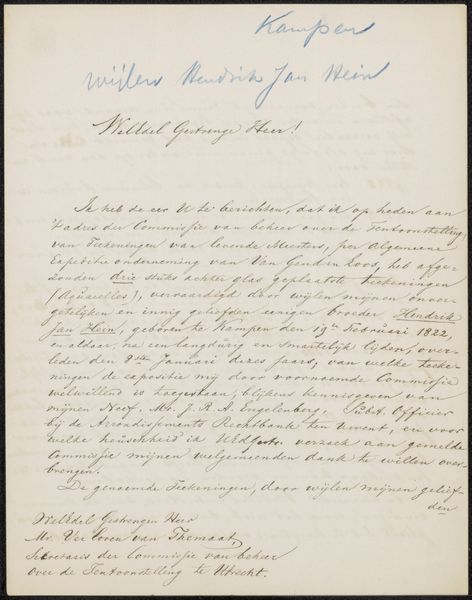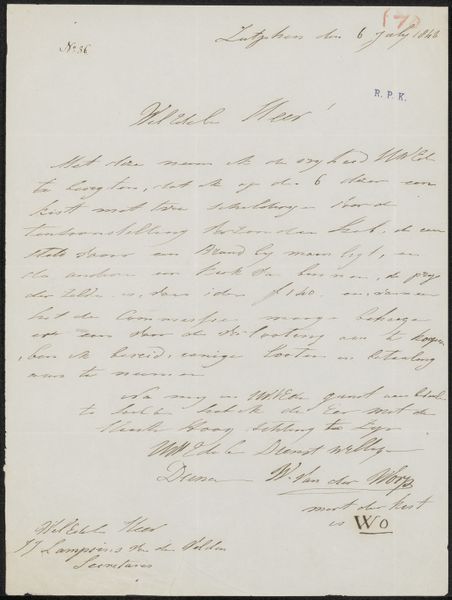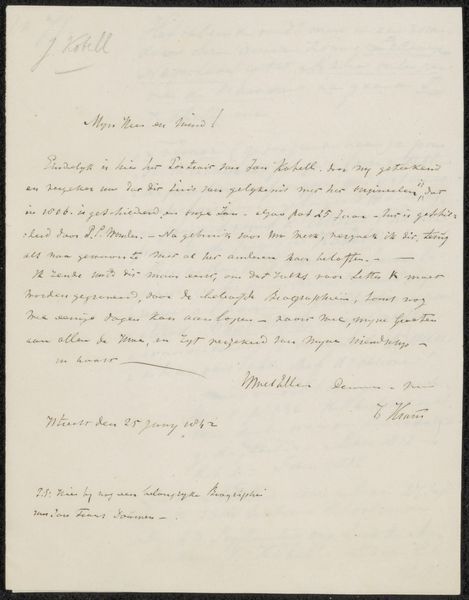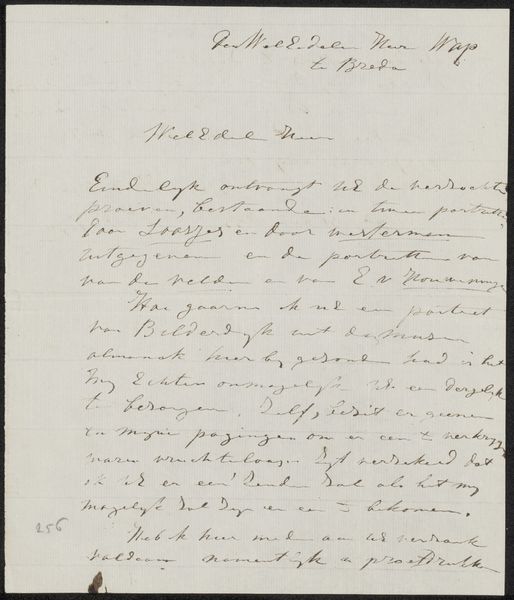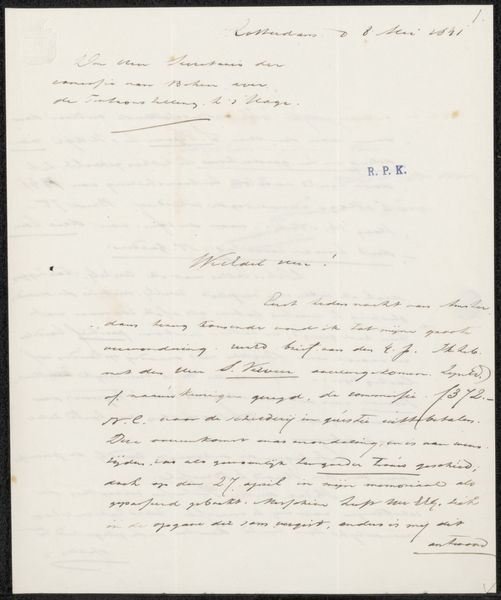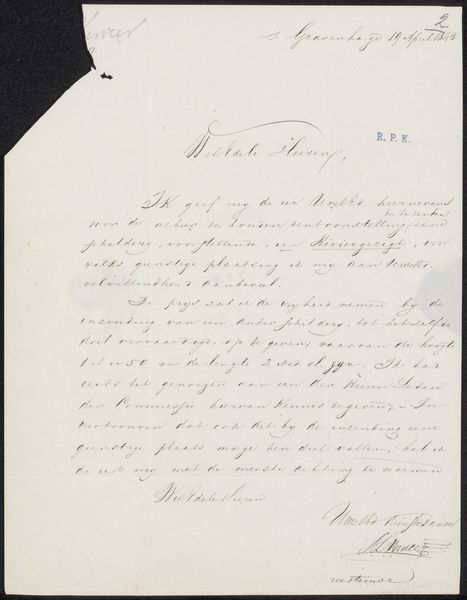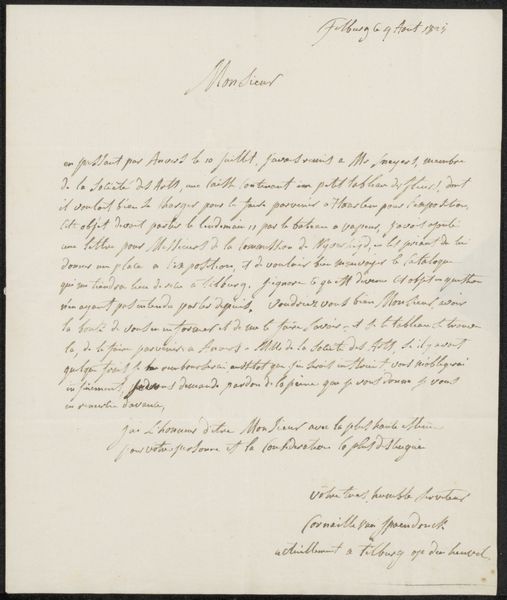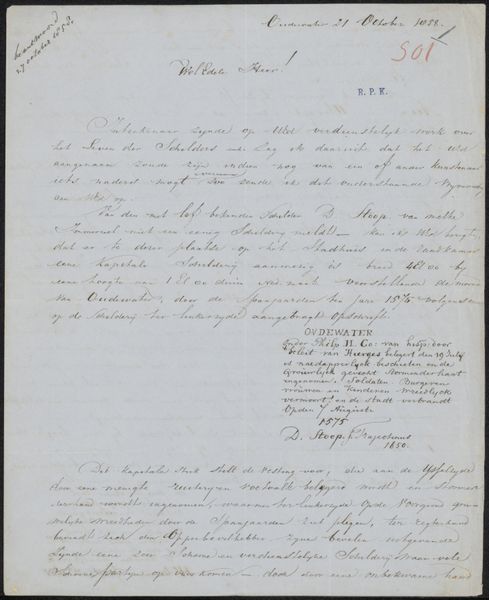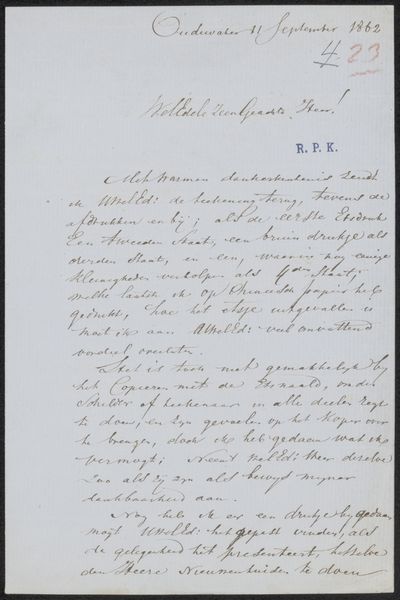
drawing, paper, ink, pencil, pen, architecture
#
portrait
#
drawing
#
paper
#
ink
#
pencil
#
pen
#
architecture
#
calligraphy
Copyright: Rijks Museum: Open Domain
Curator: So, this is Johannes Godfried van Beusekom’s "Brief aan Christiaan Kramm," possibly from 1859. It's ink and pencil on paper, featuring his beautiful calligraphy. What strikes you most about it? Editor: Well, the script is so elegant, but honestly, it's hard to read! It almost feels like the visual presentation of the words is more important than the content itself. What do you see in this piece? Curator: Absolutely! Think about who Beusekom was—likely a man of privilege. The act of letter writing then wasn't just about conveying information; it was a performance of social standing, education, and belonging within a certain class. What can calligraphy as a design reveal about the artist’s privilege in 19th-century Dutch society? Editor: It suggests a certain leisure, right? Someone who has the time and training to perfect this elaborate handwriting, versus someone just scribbling a note. But it’s also a letter addressed to an architect, regarding a cholera hospital – isn’t that a rather grim context? Curator: Exactly. This intersection is key. On one hand, we have the refined elegance of the letter itself, reflecting a certain societal order and aesthetic value. But on the other, it references the stark realities of disease and social inequality inherent to cholera epidemics, mainly affecting lower social classes. How does that contrast influence your interpretation? Editor: I see what you mean! It brings up the question of who benefits from beauty and refinement in a society grappling with such stark disparities in health and wellbeing. Curator: Precisely. By analyzing the aesthetic choices against the backdrop of social issues, we gain a much richer understanding of the work’s place within its time. I am curious about Beusekom’s motivation here, and the social implications of Krankenhaus architecture for the poor and vulnerable. Editor: That's such a fascinating way to look at it. I wouldn't have thought about it beyond just being a pretty letter. Curator: Art is never created in a vacuum, but through our conversation it is part of history that asks important questions about social inequality.
Comments
No comments
Be the first to comment and join the conversation on the ultimate creative platform.
